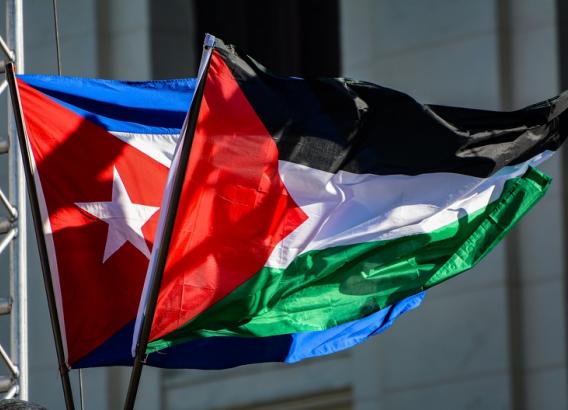Victor Manuel: The landscape in the heart

His thin body wandered every day by the streets of the Old Havana, which he got to know stone by stone. He walked, calmly, and held in his hand his greatest treasure: bags with paint tubes, his paintbrushes, which gave life to renowned art works of our artistic creation. He happily walked into his painting studio to draw landscapes of quiet beauty and especially, creole women with wistful look.
Poet and writer Lezama Lima, when addressing Víctor Manuel, stated that he was “one of our mysteries and that is why he knew the mysterious hundred doors of the city.”
Our Nicolás Guillén said that in Víctor Manuel’s work “the plastic discovery of the Creole and our roots, and its most demanding expression, come together in a synthesis of motivations and resources that only a powerful artist can offer.”
In Guy Pérez Cisneros’ words, in his book Estrategias de un crítico:
“With his somewhat fin-de-siècle concept of beauty – art for art's sake, pure painting – Víctor Manuel believes he lives for art, without suspecting that one does not truly live for art but when one lives for something else. This leads him to work worthy and solid as a theorem; to the immobile and eternal work, never old, never decrepit, but also never young, never excessive, never capable of dying.”
The beginning of a story
His name was Manuel García and he was born in 1897 in a crowded neighborhood. Since he was a kid he was attracted to painting. In 1913 he enrolled at the San Alejandro School. He learns the fundamentals with painter Leopoldo Romañach and holds his first personal exhibition at Las Galerías.
He traveled to Paris in 1925 and his eyes were dazzled by that city, where he visited galleries and museums, made comparisons, and soaked up the capital's atmosphere. Two years later, upon his return to the Island, it would be the emergence, but also the break with the already dusty, aged canons of a classicism that still clung to life and yet expired. He exhibits at the Arte Nuevo Exhibition, held in Havana under the auspice of Avance Magazine.
From Europe, the artist brought a life-giving breath to 20th century Cuban art. Rebellion? Reaction against officialism? A need to paint Cuba from a different perspective? The truth is that his quest comes together, and how!
There has been talk of Gauguin's influence on his painting. However, if he assimilated it, he knew how to free himself from it, because the oval faces of content silence move away from exoticism.
His viewpoints
Víctor Manuel thought: “Modern art has many good things, always when it comes to Braque, Picasso. If the work is well done, it does not matter what movement it is; yes avant-garde, yes modern. Painting goes only two ways: good or bad.”
One of the particularities of his creation is the way in which he captured the landscape. Travel stopped by places and moments; rivers, sunsets, flamboyant trees, palms, streets filtered by the Cuban light, that light that he discovers and delivers, from a very personal elaboration.
He said: “I like to add brilliance to the Cuban landscape, but that has nothing to do with painting gray; if the day is gray. In black and white you can also make a wonderful landscape.”
From a Tropical Gypsy
Gitana Tropical (Tropical Gypsy) is his most celebrated and famous painting. Much has been said about this woman who still maintains her freshness. He painted it in 1929, in Paris. She is a mulatto woman to whom he gave slanted Indian eyes from Peru or Mexico. Yes, in particular, it is a synthesis of races, of those that populate America.
Final
In Havana, the main stage of his life, the painter died on February 1, 1969. I prefer to imagine him in Old Havana, with his bags full of brushes and paint tubes heading to his studio. His work grows over time, full of poetic resonances in our art.
On the occasion of the centenary of his birth in 1997, the National Museum, Palace of Fine Arts, organized an exhibition with 25 works by the relevant author at the José Martí Memorial, in the Revolution Square, with themes from his painting: landscapes, portraits, women's figures and several still lifes.
Translated by Sergio A. Paneque Díaz / CubaSí Translation Staff














Add new comment